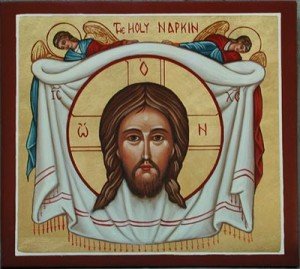As I indicated in the last issue of this article, the definition of the Holy Spirit being the third Person of the Trinity directly influenced the Eastern Church’s understanding of the Eucharist. If the epiclesis (i.e., invocation of the Holy Spirit to transform the gifts of bread and wine) in Cyril’s prayer reflects a new theology of consecration, the intercession truly expresses a new understanding of the very purpose of consecration. The Spirit is invoked to change bread and wine into Christ’s Body and Blood so that in the presence of the divine victim the church may intercede for herself and the world, the living and the dead. It is significant that Cyril can speak of the sacrifice as accomplished as soon as the epiclesis has been uttered and Communion is no longer essential to the rite of sacrifice. The intercession had previously followed the Ministry of the Word. There may have been a certain element of petition in the earlier eucharistic prayer, as there was in the Jewish blessing. But a comprehensive intercession was certainly a new departure in the fourth century and owed its inclusion in the prayer to the new emphasis that was placed on propitiation. It must be noted how in this view of the Eucharist the theology of the New Testament is reversed. St. Paul speaks for the whole of the New Testament in affirming that God was in Christ reconciling the world to himself. But in Cyril’s teaching it is not we who are reconciled with God, but God who is propitiated by the sacrifice of Christ which we offer, and is so inclined to hear our supplications. It is significant that from the fourth century the eucharistic prayer is called in the East the anaphora, the prayer which offers the sacrifice. The West called its prayer the canon: short for canon gratiarum actionis, the fixed way of giving thanks. But in neither East nor West was thanksgiving the dominant note it had been in the second and third centuries.
The new development in the understanding of consecration found expression in the people’s devotional use of the sacrament. In the next issue I shall present Cyril’s description ofCommunion.
It is important for us to know that our understanding of the Eucharist and Communion was not fully understood by the Apostles when Christ instituted it at the Last Supper but, rather, developed over the centuries. There is no way that the Apostles could have fully understood what Jesus did. All they really knew was that, in some way, Jesus assured them He would be with them always.


